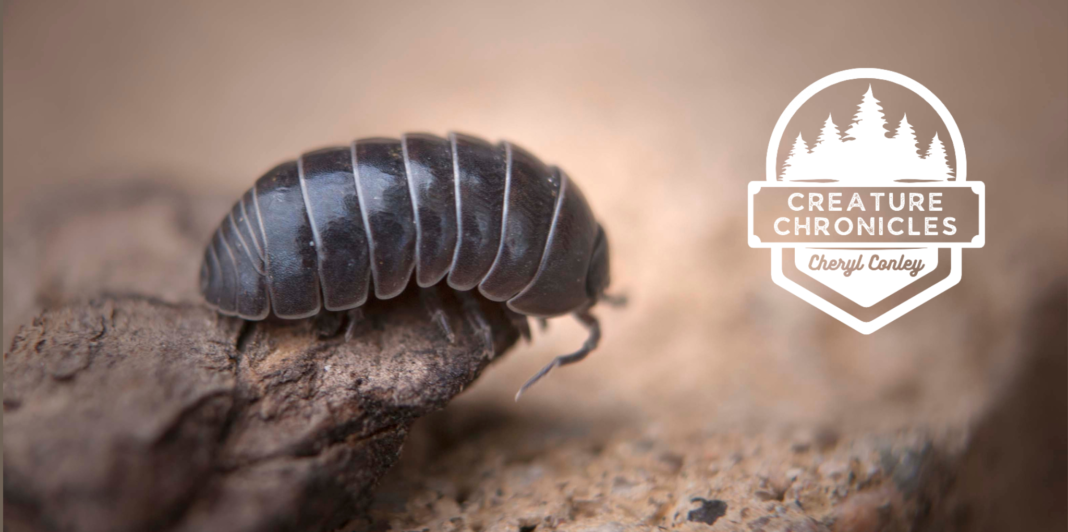Creature Chronicles: Let’s Talk Bugs
Bugs bug me. They give me the creeps whenever I see one. Sometimes it feels like I have one crawling on me and I immediately freak out. I don’t think this will ever change but I know they all have a place on our earth and they all serve a purpose. Let’s take a look at one of them you’ve probably seen in your yards.
Have you ever picked up a rock and seen this little black bug? Maybe you’ve seen them in other damp areas like mulch or under logs. My grandchildren call them roly-poly bugs because they roll themselves up into a ball when threatened or to retain moisture. This process is called conglobation. Their scientific name is Armadillidium vulgare. The roly-poly, or pill bug, is a terrestrial crustacean that looks just like an insect but is actually not an insect at all. They are more closely related to lobsters, crabs and shrimp but have adapted to living life on land. No one really knows how they became land animals. They have a hard shell, seven sets of legs and they breathe through gills. The problem with gills is that they can dry out and that’s the reason they are found in damp areas. Even though they are not actually a bug, that term is a catch-all for small creatures so many of us still refer to them as bugs.
The bodily functions are quite unique. They don’t urinate. Their waste fluids are secreted through their shells. They eat their own feces where they obtain nutrients. This is known as self-coprophagy. When they’re thirsty they can drink from their mouths or drink through a tube-shaped structure that juts out from their rear ends—sort of like a straw I would guess.
Females have a pouch on their underside called a marsupium where they carry their eggs until they hatch. This is usually two or three months. After the eggs hatch, the babies may return to the pouch to grow. Mom produces a marsupial fluid that nourishes the young ones.
Are these bugs good for anything? Yes, they certainly are. They are great composters. They prefer to eat dead organic plant matter which speeds up decomposition. They have bacteria in their guts that gives them the ability to process dead fruit, leaves and other vegetation and return it to the earth or compost pile where it is then digested by fungi and bacteria.
There is a downside to having these animals around especially in certain agricultural areas. Because they are attracted to wet areas with decaying plant matter, they thrive in locations with heavy rains where they eat decaying crop matter and emerging seedlings. Farmers report an increase in these fellas destroying soybean crops, corn, beans, squash, peas, melon, chard, beets, cucumbers, potatoes, spinach, and lettuce, with potential for significant losses in strawberries. They will also eat wood supports in houses.
Good or bad, they’re here and having just learned they’re not really an insect, I find them quite amazing! However, I still don’t like them.















